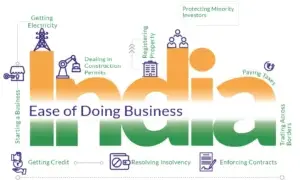By: MooL Raj
In the age of information, technology has seamlessly woven itself into the fabric of education, promising enhanced learning experiences and unprecedented access to knowledge. However, the flip side of this digital coin has become increasingly evident: the pervasive distraction that technology poses to students. As laptops, smartphones, and tablets become indispensable tools in the academic journey, the battle against distraction has intensified, reshaping the landscape of focused study and academic success.
The allure of social media is perhaps the most formidable adversary in the war against distraction. With a mere click, students are transported into a world of notifications, likes, and comments—a world far more enticing than the pages of a textbook or the intricacies of algebraic equations. The constant ping of incoming messages competes with the quiet call of concentration, pulling students away from the intellectual tasks at hand. The addictive nature of social media platforms transforms them into digital time sinks, consuming valuable study hours and fragmenting attention spans.
Multitasking, once hailed as a skill in the digital era, has now revealed itself as a deceptive ally. Students, armed with devices capable of seamlessly toggling between apps and windows, often find themselves juggling multiple tasks simultaneously. While this may seem like an efficient use of time, research indicates that multitasking leads to shallower cognitive processing and diminished retention of information. The illusion of productivity created by technology, therefore, becomes a hindrance rather than a boon to academic achievement.
The proliferation of online entertainment platforms further compounds the distraction dilemma. Streaming services, online gaming, and a plethora of engaging digital content beckon students with promises of entertainment and relaxation. The temptation to unwind with a captivating episode or indulge in a quick gaming session can easily derail well-intentioned study plans. The boundary between leisure and study blurs in the digital realm, leaving students susceptible to the seductive call of entertainment at the expense of their academic pursuits.
The omnipresence of smartphones introduces an additional layer of distraction, as the device that serves as a communication lifeline also harbors a trove of diversions. The constant stream of notifications, ranging from messaging apps to news alerts, act as a relentless beckon to students, redirecting their focus and interrupting the continuity of deep, meaningful study. The compulsion to check notifications in real-time fractures concentration and disrupts the cognitive flow essential for effective learning.
While technology undoubtedly presents challenges to student focus, it would be remiss not to acknowledge its potential as a powerful ally in the learning process. Educational apps, interactive platforms, and digital resources have the capacity to revolutionize how students engage with academic content. Striking a balance between harnessing the benefits of technology and mitigating its distracting tendencies is the key to unlocking its true potential in the educational landscape.
In conclusion, the pervasive influence of technology on student life is a double-edged sword, offering unparalleled opportunities for learning while concurrently laying the groundwork for distraction. As students navigate this intricate digital landscape, cultivating mindfulness and adopting strategies to minimize distractions become imperative. The ability to wield technology as a tool for academic empowerment, rather than succumbing to its distracting allure, will define the academic success of the digital generation.
The author is a columnist and freelance writer





